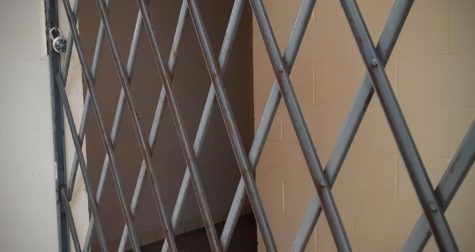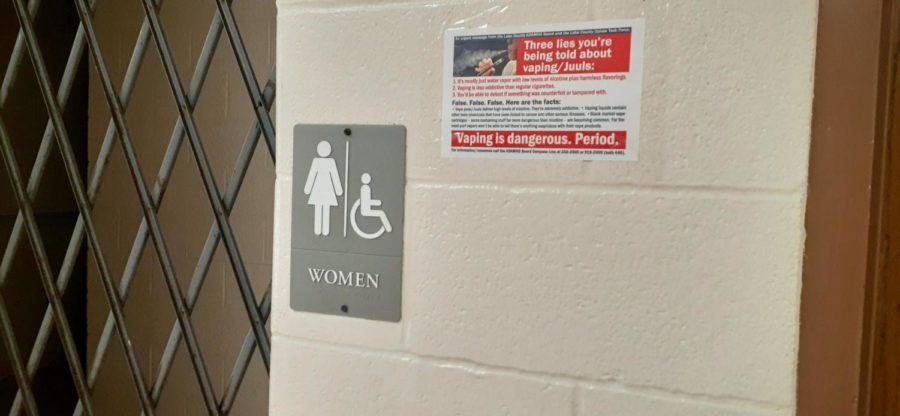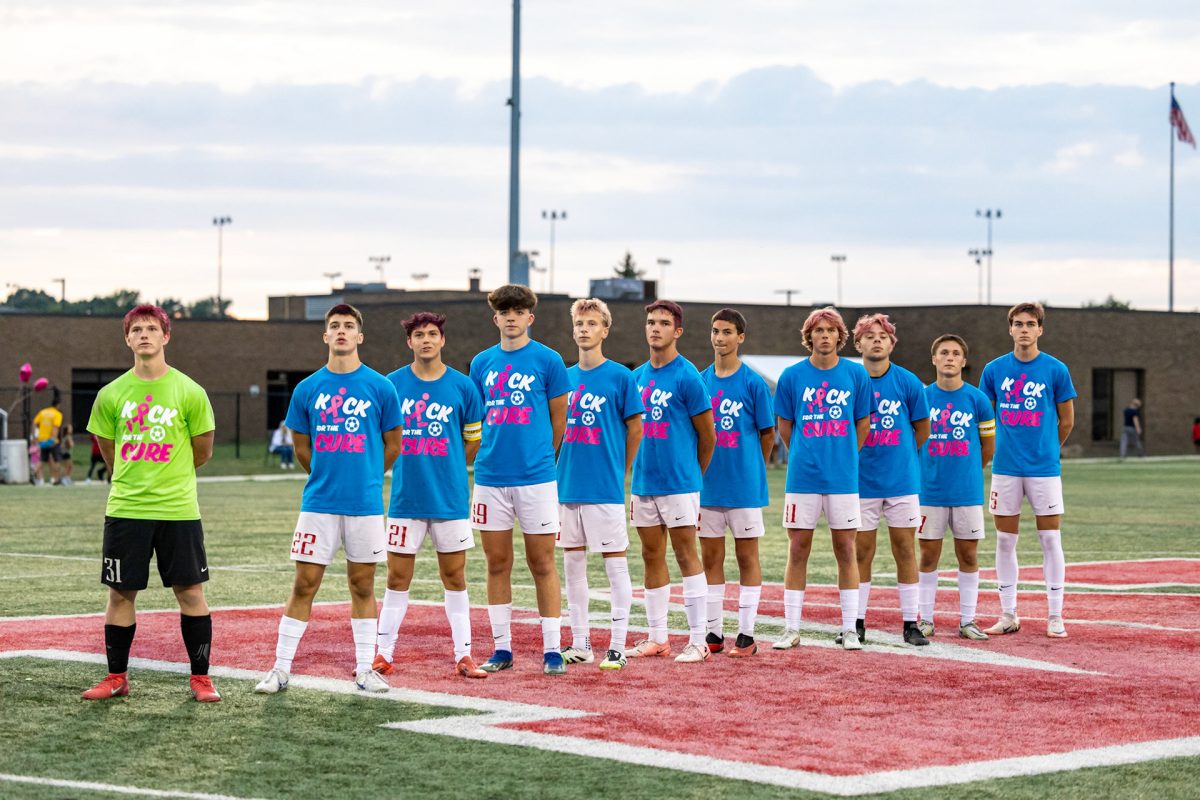School Restrooms: Why Are They Always Closed?
The answer is a mix of challenges that many high schools face, and students need to take charge of the problem.
Why are Mentor High School bathrooms closed so often? The answers are complicated.
April 6, 2022
Here at MHS, closed bathrooms have been an issue students are forced to maneuver around for years. But this is not a situation unique to Mentor High School.
Currently, all across America, the cleanliness and safety of public school restrooms are questioned by students. In a 2019 survey of students for buildings.com, up to 50 percent of 630 surveyed high school students rate the condition of their school restrooms as “poor or fair.” According to the same article, nearly 70 percent of students say school restrooms that are poorly maintained or unclean generally lower their overall opinion of the school.
In an educational environment where efforts are made by school administrators to encourage the success and well-being of students, this negative reflection cast by a commonly student-caused problem poses a threat to educational efforts. If students are seeking the most out of their time in high school, then it is only in their best interest to take care of it while they are here.
Mentor High School has shown it is not an exception to this rule. Unfortunately, visitors might get a poor impression of the school from its bathrooms. This perception is too often confirmed by stepping into one of the restrooms between class periods and finding half a dozen kids standing around, casually talking about and possibly engaging with vaping or other inappropriate activity.
 According to the experiences of one particular student at Mentor High School who wishes to remain anonymous, closed restrooms have become an inconvenient nuisance that can mostly be blamed on kids who abuse restroom privileges. This student would agree with the commonly echoed reprimand, “Just stop doing stupid things in the bathroom.” However, because of this continual abuse, certain restrooms have been evaluated to be removed altogether. One example of this is the music wing restrooms which have commonly been the setting for questionable and harmful activity. As a result, staff members have reportedly considered the prospect of completely gutting these restrooms.
According to the experiences of one particular student at Mentor High School who wishes to remain anonymous, closed restrooms have become an inconvenient nuisance that can mostly be blamed on kids who abuse restroom privileges. This student would agree with the commonly echoed reprimand, “Just stop doing stupid things in the bathroom.” However, because of this continual abuse, certain restrooms have been evaluated to be removed altogether. One example of this is the music wing restrooms which have commonly been the setting for questionable and harmful activity. As a result, staff members have reportedly considered the prospect of completely gutting these restrooms.
Whether it’s misplaced items in the restroom from the Student Center or the vandalized stall in the music wing restrooms, nearly every student has heard these stories if not experienced some first-hand.
There are, of course, several key reasons for bathrooms being closed. Most often, the causes are general maintenance and cleaning along with repairs. According to Mr. Mike Swider, the head custodian at MHS, there are six girls’ restrooms and seven boys’ restrooms in the main halls for him and another custodian to manage throughout the day.
“The school faces the cost of replacement parts that are not normal wear and tear in the bathrooms,” Mr. Swider explains. “The cost of wasted products and replacement fixtures – it all adds up.”
This clearly shows that misuse and potentially, vandalism has led to closed restrooms.
With the now burnt-out TikTok craze of the Devious Lick challenge started in September of this school year, vandalism of high school property became rampant. Obvious petty theft was excused and rather encouraged among classmates for the chance at a viral clip. Public restrooms became the perfect target for many of these videos because student privacy concerns can make them a challenge for staff to monitor, resulting in many of the closed restrooms seen in high schools as the result of activity there. Within MHS, Mr. Swider described to Cardinal Nation the struggles he went through trying to keep restrooms open and operational.
“[Devious lick challenges] caused many soap and [toilet paper] dispensers and products to be replaced,” Mr. Swider says, “drain pipes from the sinks to be repaired and excess maintenance in the restrooms to be done.”
Mr. Swider explained that the pandemic made this situation even more challenging, suggesting that the Tik Tok trend arrived at the worst time possible.
“Due to COVID-19 it was difficult to get replacement parts for the restrooms which in turn caused the closure of restrooms,” Mr. Swider says. Because of this type of damage, restrooms at Mentor High School were often found closed or nonoperational throughout different periods of the first semester.
The music wing bathrooms serve as another frequent example of how school restrooms can be vandalized and abused. Recently, there has been a significant increase in the number of students not in a music class at MHS being found in M-wing’s halls anyway, using M-wing’s restrooms. In recent years, these restrooms have been vandalized in nearly every way imaginable and have also set the scene for questionable, even illegal activities.
According to Mr. Stephen Poremba, the head band director at MHS in M-wing, student vandalism, loitering, and drug use have all played a role in M-wing’s restrooms being temporarily closed. In addition to encouraging students to make smarter decisions on what to do to their bodies, Mr. Poremba explains that school bathrooms should just be used for their “intended purpose and not for anything else!”
Mr. Poremba’s concern has resulted in increased surveillance to prevent any further suspicious activity.
Although many students may not think about the consequences of their actions or behavior at school, Mr. Swider details that even minor fixes and smaller jobs cause restrooms to be closed for at least one mod. Anything more than a wet floor needing to be mopped up can take up to weeks to repair or completely renew as in the case of the Paradigm restrooms. Recently during the winter months, both the girls’ and boys’ restrooms in the Paradigm were shut down because of vandalism and abuse. Finally, after months of work to refurbish them, these restrooms are now open once again in the state-of-the-art building.
So, what’s got to happen to keep this stuff from happening again?
In order to prevent more bathrooms from being closed, students have to take on responsibility.
Several weeks ago in mid-March, Mr. Jason Crowe, principal at MHS, made a morning PA announcement addressing several issues—the first of which was school restrooms. In his brief mention of the problem, Mr. Crowe clearly articulated the expectations and the possibility of consequences if school policy is not met.
“When students are found damaging property there are disciplinary consequences applied,” Mr. Crowe says. “Monitoring students is a job responsibility of our Student Supervisors. This requires them to help monitor restrooms. Report acts of vandalism to a staff member, encourage everyone to act responsibly and respect their environment.”
Not only is it the student body’s responsibility to look out for the correct use of the restrooms, but to help preserve the learning environment as well. Students frequently desire to avoid being “snitches” or find an excuse to not tell on a friend, but the reality is that vandalism is a crime that can inconvenience all of us and the “snitch” mentality simply protects inappropriate and even criminal activity that imperils all of us. The issue rises to much more than an inconvenience for students with health issues as reported in “The Ugly Truth: School Restroom Impact on Student Health.”
This should serve as an encouragement to take responsibility for one’s own actions. The quote, “How you do anything is how you do everything” is an applicable one in this situation that summarizes how students can promote the development of character and responsibility.
It might sound cliche when students hear from teachers, “this school is our home for four years, so let’s take care of it,” but the truth is that while we spend our time within the walls of MHS, students can either decide to waste all the effort poured into their growth, or maximize from the simple things they are provided – even if that’s a basic roll of toilet paper.







